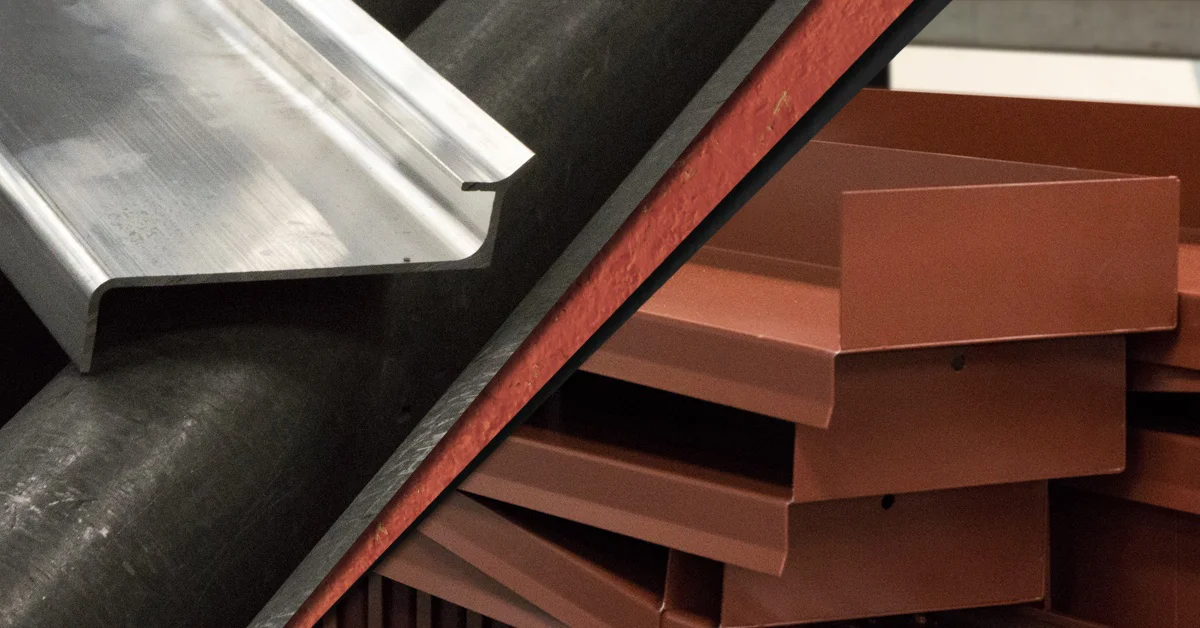When a drainable louver blocks water from getting through, that water usually drains down the jamb channels and into the sill. But where does it go from there?
The Puddle and The Sill.jpg?width=275&height=491&name=EA430%20Sill%20Extension%20(Resize).jpg)
Louver blades often have catches that capture rainwater as it passes over the blade profile. A drainable blade has special troughs that direct water towards channels in the jambs, which then direct the water to the sill of the louver. From the sill, the water can freely drain from the louver's face. However, there is a chance that excess water will move back through the louver and into the duct work.
Think of it like a puddle forming on the floor. If you pour more water, then the puddle will expand. In heavy rain, water is constantly added to the puddle at your louver’s sill. There is a good chance this puddle will expand back through the louver. This water can damage your duct work. Nobody wants that.
Adding a drain pan can prevent the puddle from forming at the sill. In more serious cases, like heavy rain and severe weather, the drain pan may be required to keep the excess water out. A sill extension can also work, in theory.
Drain Pans
A drain pan is a pan installed under the sill to capture water coming from the jambs’ channels. .jpg?width=400&height=267&name=Drain%20Pan%20(Resize).jpg)
The pan is designed with a wall on its back side, which blocks off the bottom of the louver. With this wall, the puddle can't get through. The excess water falls in the pan and stays out of the ductwork. The face side of the drain pan is open, allowing water to pour freely out of the louver’s face.
In short, the drain pan collects the puddle, keeps it out of the duct, and directs it out of the open face. All severe weather louvers come with a drain pan installed.
The drain pan is an effective tool at keeping water out, but how does it compare to the sill extension? Let's look at another accessory to learn more.
Sill Extensions
.jpg?width=360&height=240&name=Sill%20Extension%20(Resize).jpg) A sill extension is like a drain pan in some ways: it is installed on the louver’s sill and can direct water out of the louver. However, sill extensions are primarily installed when a louver is recessed in an opening. They are designed to provide a visible sill along the building's façade, even if the louver is inside of the opening.
A sill extension is like a drain pan in some ways: it is installed on the louver’s sill and can direct water out of the louver. However, sill extensions are primarily installed when a louver is recessed in an opening. They are designed to provide a visible sill along the building's façade, even if the louver is inside of the opening.
The sill extension has a lip that extends beyond the louver and out of the opening, providing a downward ramp for the excess water to move. As water collects in the sill, it can slide down the ramp and out of the opening.
Choosing the Right Accessory
.jpg?width=300&height=300&name=Drain%20Pan%20-%20Sill%20Extension%20(Resize).jpg)
However, sill extensions have no backing to block off the bottom portion of the louver. Also, while its downward ramp can direct water away from the opening, sill extensions are not designed for this purpose.
Drain pans are designed to collect water, to block it from entering through the bottom of the louver, and to drain it out of through the front of louver.
Without a drain pan, run off can accumulate from higher louvers as it runs down the side of the building. This creates a waterfall effect that compounds as more louvers drain water from above. This can compromise the performance of louvers, as more water passes over their blades.
With sill accessories, like drain pans and sill extensions, you can prevent rainwater from collecting in your louver.
For more on louvers, check out these Newsstand articles:
- Options for Louvers
- Drainable Louvers for Rainy Days
- The Condenser - Product Spotlight: The AS3D99VS
- Five Things to Know When Choosing Louvers
Many severe weather louvers will come with a drain pan, but they can be added to other louver types. What do you think? Are drain pans a must-have attachment? Tell us what you think in the comments below. MCDLG wants to know!
.jpg?width=275&height=275&name=CE%20-%20Open%20Book%20Square%20(Resize).jpg) MCDLG & Continuing Education
MCDLG & Continuing Education
MCDLG offers free self-paced courses online through AEC Daily.
Our louver course, An Introduction to Louvers, goes over all the basic stats, terms, and principles involved in choosing louvers for any application.
This course provides continuing education credits for a variety of institutions, including AIA's LIUs. Learn the basics of louvers and earn credit, at your own pace. Visit the MCDLG course page on AECDaily.com today!
Do you have a question on something we haven't covered here? Or maybe you need help from industry experts? MCDLG can help. Contact us by clicking on the button below.
.webp?width=91&height=70&name=MCDLG%20Logo%20(Resize).webp)






